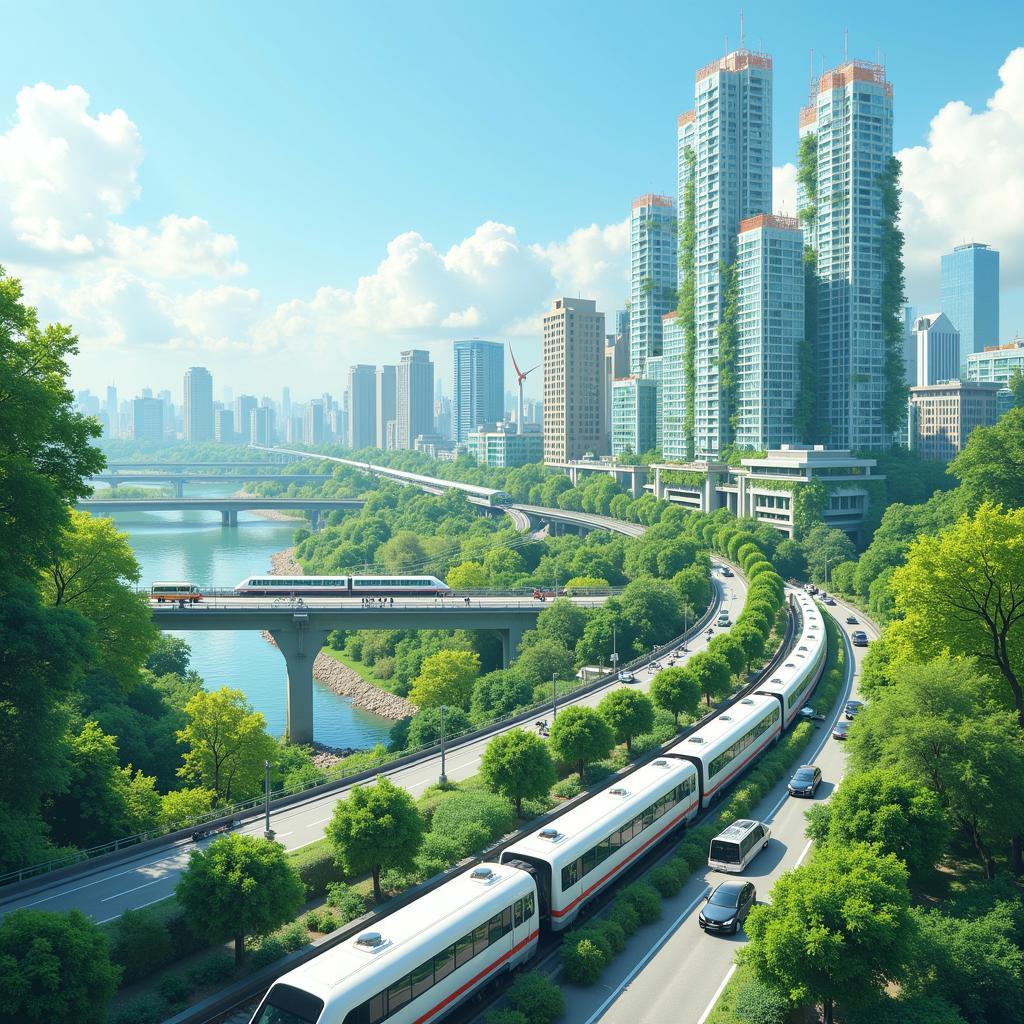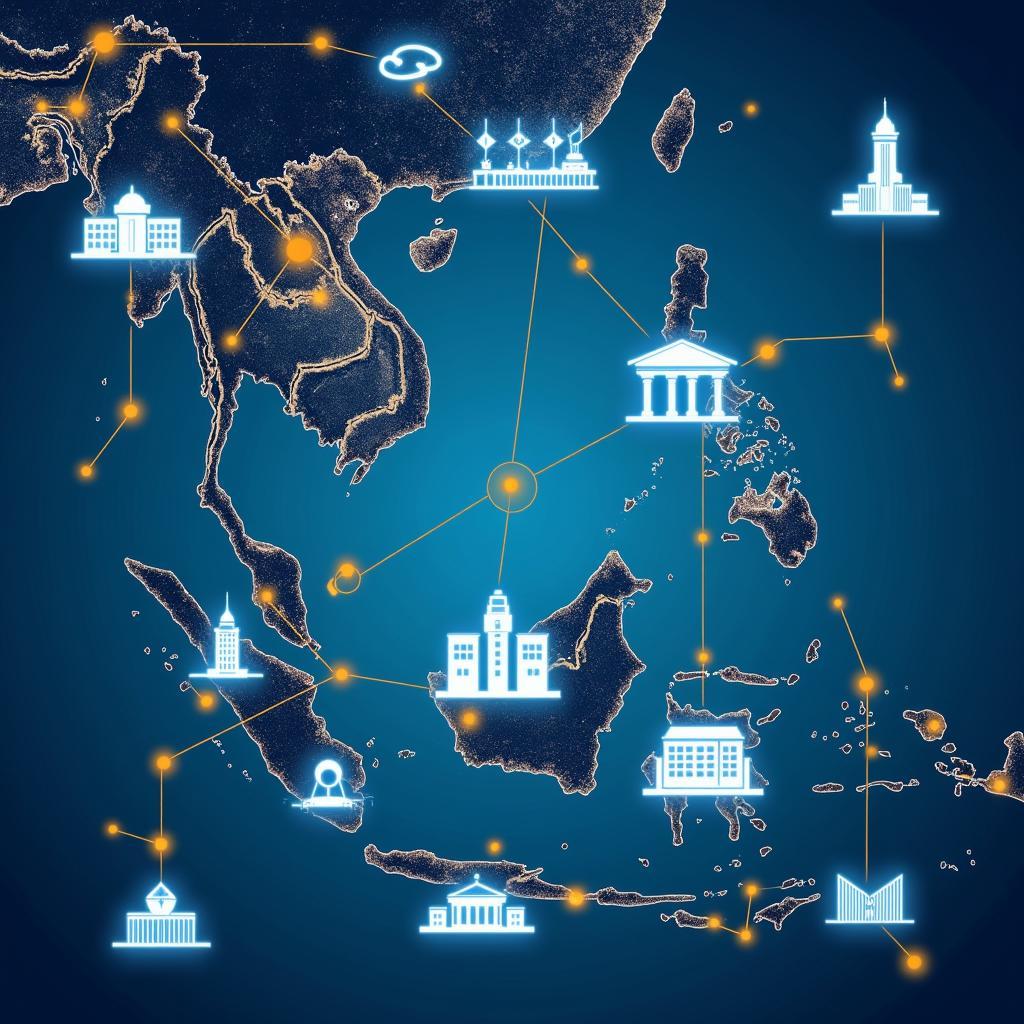ASEAN infrastructure development is a critical component of the region’s economic growth and integration. From roads and railways to digital networks and energy grids, infrastructure projects are shaping the future of Southeast Asia. This article explores the multifaceted landscape of ASEAN infrastructure, highlighting key challenges and opportunities.
The Importance of Robust ASEAN Infrastructure
Infrastructure acts as the backbone of any thriving economy. In ASEAN, it plays a vital role in facilitating trade, promoting investment, and improving the lives of millions. Well-developed infrastructure networks enable the seamless flow of goods and services, connect businesses to regional and global markets, and enhance access to essential services like healthcare and education. Furthermore, strategic infrastructure investments are crucial for attracting foreign direct investment (FDI), fostering innovation, and driving sustainable development. Investing in ASEAN infrastructure, such as through the adb asean infrastructure fund, is crucial for the region’s sustained growth.
Efficient transportation networks are essential for reducing logistical costs and improving regional connectivity. This includes upgrading existing roads, expanding rail networks, and modernizing ports and airports. These developments not only support intra-ASEAN trade but also enhance the region’s competitiveness in the global market.
Overcoming Challenges in ASEAN Infrastructure Development
While the potential of ASEAN infrastructure is immense, significant challenges remain. One major obstacle is the substantial funding gap. The sheer scale of infrastructure needs in the region requires significant investment, often exceeding the capacity of individual countries. Addressing this gap requires innovative financing mechanisms, public-private partnerships, and strategic engagement with international development institutions. Another challenge lies in navigating the diverse regulatory landscapes and ensuring project transparency and accountability across different member states. Moreover, the environmental and social impacts of infrastructure projects need to be carefully considered and mitigated.
Navigating Funding and Regulatory Frameworks
Securing adequate funding is paramount for successful infrastructure projects. Exploring various financing options, such as blended finance and green bonds, can help bridge the funding gap. Furthermore, streamlining regulatory procedures and promoting harmonization across ASEAN countries can create a more conducive environment for investment. The asean capital markets infrastructure is an important development in this regard.
“Strong public-private partnerships are crucial for driving large-scale infrastructure projects,” says Dr. Anya Sharma, a leading economist specializing in Southeast Asian development. “These partnerships can leverage the expertise and resources of both the public and private sectors to achieve shared goals.”
Sustainable Infrastructure for the Future
Incorporating sustainability principles into infrastructure development is crucial for long-term prosperity. This includes prioritizing projects that minimize environmental impact, promote energy efficiency, and enhance climate resilience. The adb asean infrastructure is designed with this in mind. Investing in green infrastructure can also create new economic opportunities and contribute to a more sustainable and resilient ASEAN.
 ASEAN Sustainable Infrastructure
ASEAN Sustainable Infrastructure
The Future of ASEAN Infrastructure
The future of ASEAN infrastructure is bright, with ongoing efforts to improve connectivity, enhance efficiency, and promote sustainability. By addressing the existing challenges and embracing innovation, ASEAN can unlock its full infrastructure potential and pave the way for a more prosperous and integrated region. Projects like the ase build slabs are indicative of this forward momentum. Collaboration with international partners, like the asean aiib, will also be crucial for securing the necessary funding and expertise.
ASEAN infrastructure development is a complex but crucial endeavor. By focusing on sustainable solutions and fostering strong partnerships, the region can build a resilient and interconnected future.
What are the key challenges in financing ASEAN infrastructure projects?
Funding gaps, complex regulatory frameworks, and differing levels of development across member states are key challenges.
How can technology improve ASEAN infrastructure?
Smart technologies can enhance efficiency, optimize resource allocation, and improve the management of infrastructure projects.
Conclusion
ASEAN infrastructure development is a journey, not a destination. With continued focus and collaboration, the region can overcome challenges and realize the full potential of its infrastructure, driving economic growth, improving lives, and building a more connected and prosperous future.
FAQs
-
What are the main types of infrastructure projects in ASEAN? Transportation (roads, railways, ports, airports), energy (power plants, transmission lines), water (dams, irrigation systems), and digital infrastructure (telecommunications, internet access).
-
Why is infrastructure important for ASEAN economic growth? Infrastructure facilitates trade, reduces transportation costs, attracts investment, and improves connectivity, all of which contribute to economic growth.
-
What is the role of the private sector in ASEAN infrastructure development? The private sector can provide funding, expertise, and innovation to infrastructure projects through public-private partnerships.
-
How can ASEAN countries improve regional infrastructure connectivity? Harmonizing regulations, streamlining border procedures, and investing in cross-border infrastructure projects can enhance connectivity.
-
What are some examples of successful infrastructure projects in ASEAN? The Singapore-Kuala Lumpur High-Speed Rail, the Jakarta MRT, and various port expansion projects across the region are notable examples.
When you need assistance, please contact Phone Number: 0369020373, Email: aseanmediadirectory@gmail.com or visit our address: Thon Ngoc Lien, Hiep Hoa, Bac Giang, Vietnam. We have a 24/7 customer service team.
